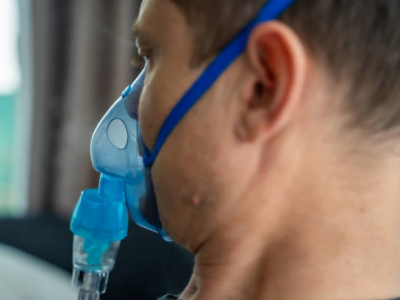Our weekly wrap-up of antimicrobial stewardship & antimicrobial resistance scans
Belgian study reports high rate of improper antibiotic prescribing in kids
Belgian researchers report that almost a third of prescriptions for fluoroquinolones written for hospitalized children were deemed inappropriate, according to a study today in BMC Infectious Diseases.
The investigators analyzed data on all 262 fluoroquinolone prescriptions from 2010 through 2013 at two university children's hospitals. They then employed univariate and multivariate logistic regression models to analyze risk factors for inadequate dosing.
The team found that 79 prescriptions (30.2%) were inappropriate, with 57.0% of improper prescribing classified as underdiagnosing. Only 16.8% of the drugs were prescribed for labeled indications, and only 35.1% were guided by bacteriologic findings. Infants and older preschoolers were at particular risk for dosing errors.
The authors conclude, "[Fluoroquinolone] prescriptions for children should be improved by specific pediatric antimicrobial stewardship teams. Furthermore, pharmacokinetic studies should optimise dosing recommendations for children."
Feb 23 BMC Infect Dis study
Researchers note high rate of extremely resistant Pseudomonas in Thailand
Among 255 patients with Pseudomonas aeruginosa infections, 56 (22.0%) had extensively drug-resistant P aeruginosa (XDR-PA) and 32 (12.5%) had the multidrug-resistant (MDR-PA) form, scientists from Thailand announced yesterday in PLoS One.
The investigators retrospectively studied patients hospitalized with PA infections from April to December of 2014. The combined XDR-PA and MDR-PA total represents a 34.5% incidence of drug resistance. The researchers said that receiving total parenteral nutrition, prior carbapenem use, and prior fluoroquinolone use were all associated with a higher rate of XDR-PA. Factors associated with mortality among all patients were sepsis or septic shock, admission to a medical department, receiving a central venous catheter, and having an XDR-PA infection.
The authors reported that all XDR-PA infections remained susceptible to colistin. They conclude, "The prompt administration of an appropriate empirical antibiotic should be considered when an XDR-PA infection is suspected."
Feb 22 PLoS One study
Study evaluates cost-effectiveness of Clostridium difficile treatments
Originally published by CIDRAP News Feb 22
A systematic review of treatments for Clostridium difficile infection (CDI) yesterday in Infection Control and Hospital Epidemiology concludes that the most cost-effective treatment remains unclear.
The literature review conducted by researchers from the Cleveland Clinic and the University of Texas School of Public Health included 14 studies on economic valuations of various treatment modalities for initial and recurrent CDI. Thirteen of the studies were conducted in high-income countries in the last 5 years, and more than 90% were deemed moderate-to-high or high-quality. Cost of therapy, time horizon, treatment cure rates, and recurrence rates were common influential factors in the study results.
The researchers found that fidaxomicin, a newer CDI drug, appears to be more cost-effective than other therapies, but not definitively. For initial CDI with no specific disease severity, fidaxomicin was found to be more cost-effective than metronidazole and vancomycin in two studies, but not in the study that accounted for severity. Two studies found fidaxomicin to be the most cost-effective treatment for initial severe CDI, but another concluded differently, possibly because of the higher cure rate of vancomycin and the higher cost of fidaxomicin. Three of five studies found that fidaxomicin was cost-effective for treating recurrent CDI.
The group also found that fecal microbiota transplantation (FMT) by colonoscopy was cost-effective for treating recurrent CDI in all four studies that analyzed it. But FMT via other routes was not found to be cost-effective.
The authors of the meta-analysis say that while fidaxomicin and FMT have opened up a new arena in CDI management, the high cost of these treatments (compared with vancomycin and metronidazole) means that further evaluation of their cost-effectiveness is needed. "Our review informs future research of areas that need improvement and may help policymakers and physicians to critically assess the cost-effectiveness of different CDI treatments," they write.
Feb 21 Infect Control Hosp Epidemiol abstract
WHO releases updated guidelines for management of latent TB
Originally published by CIDRAP News Feb 22
Updated guidelines on management of latent tuberculosis infection (LTBI) from the World Health Organization (WHO) call for expanded access to preventive treatment and testing along with new testing and treatment options.
LTBI is defined as a state of persistent immune response to stimulation by Mycobacterium tuberculosis antigens, with no evidence of clinically manifest active TB. People with a latent infection may develop active TB if they don't receive appropriate treatment.
The updated, consolidated guidelines include new recommendations on several different fronts, beginning with who should be prioritized for LTBI testing and preventive treatment. While previous guidelines have prioritized people with HIV and children under the age of 5 who have been in contact with people who have TB, the updated guidelines expand that group to include HIV-negative children, adults, and adolescents who are household contacts of people with bacteriologically confirmed TB. Select household contacts of patients with multidrug-resistant TB are also among those who may be considered for preventive treatment.
The updated guidelines also call for the use of either a tuberculin skin test or an interferon-gamma release assay in LTBI testing but note that such tests are not required for preventive treatment in people with HIV or child household contacts under the age of 5.
For treatment, the guidelines include shorter treatment options. Isoniazid monotherapy for 6 months remains the recommended treatment for children and adults, but rifampicin plus isoniazid daily for 3 months should be offered as an alternative in children and adolescents under the age of 15, and rifapentine plus isoniazid weekly for 3 months may be offered as an alternative for adults and children.
Feb 22 WHO updated guidelines for LTBI management
Platform uses metabolomic analysis to uncover novel antibiotics
Originally published by CIDRAP News Feb 21
A study today in Science Translational Medicine describes a new approach to determining the modes of action underlying antimicrobial compounds that could help speed the process of discovering novel antibiotics.
The platform developed by a team of European scientists involves rapid systematic metabolome profiling, a process that uses mass spectrometry to analyze and measure the changes that occur in metabolites—the small molecules produced by bacteria—upon treatment with a drug or compound. The idea is that these changes will provide clues to the underlying modes of action.
To test this strategy, the team exposed Mycobacterium smegmatis to multiple doses of 62 reference compounds with known modes of action, including currently used antibiotics and chemical stress agents, and used a computational framework to parse out predicted modes of action based on pairwise comparisons between known chemicals. They then tried this approach on 212 uncharacterized compounds from a drug discovery program by pharmaceutical company GlaxoSmithKline. This revealed 16 compounds that appeared to target unconventional cellular processes, and 6 with potentially new modes of action that exerted anti-tuberculosis effects by targeting fatty acid metabolism.
The authors of the study say the advantage of their approach for predicting modes of action in chemical screens is that it discriminates between compounds with previously known modes of action and those with new modes of action. "Knowing the MoAs [modes of action] of compounds at an early stage of drug discovery can guide the selection of the most promising leads, even in cases where the drugs do not yet exhibit strong bactericidal or bacteriostatic effects," they write.
Feb 21 Sci Transl Med study
CDC launches online antibiotic stewardship course
Originally published by CIDRAP News Feb 21
The US Centers for Disease Control and Prevention (CDC) yesterday launched a new online antibiotic stewardship course.
The interactive web-based activity is designed to help clinicians optimize antibiotic use to combat antibiotic resistance and improve healthcare quality and patient safety. The course will provide an overview of antibiotic resistance and explain the benefits of antibiotic stewardship across the healthcare spectrum. It will also discuss the risks and benefits of antibiotics, with a specific focus on the microbiome, adverse drug events, and C difficile infections. The first module will focus on outpatient antibiotic stewardship, and the following modules will focus on stewardship in acute care hospitals and long-term care facilities.
The CDC says the goal of the course is to help healthcare professionals deliver effective and consistent message about antibiotic use and antibiotic resistance to patients, and to provide guidance for how to apply antibiotic stewardship principles to the most common conditions that lead to inappropriate use.
Feb 20 CDC training on antibiotic stewardship
Infection diagnostic codes tied to higher rates of previous antibiotics
Originally published by CIDRAP News Feb 21
Chicago researchers who analyzed data on 78,094 patients found that diagnostic codes for infections are strong surrogate markers for prior antibacterial exposure, especially to broad-spectrum antibiotics, which may help identify patients who harbor multidrug-resistant bacteria.
Writing in Infection Control & Hospital Epidemiology, the investigators, from Cook County Health and Hospital System in Chicago detailed findings from 121,916 hospitalizations involving 78,094 patients in three Chicago-area hospitals.
Of the 121,916 inpatient encounters, 24% had an associated infection code, 47% of patients received an antibacterial drug, and 13% received a broad-spectrum antibacterial. Patients with infection-related ICD-9-CM codes had more than twice the rate of antibacterial use compared with those lacking such codes (relative risk [RR], 2.29) and a fivefold increased risk for broad-spectrum antibacterial use (RR, 5.52). CD-9-CM codes were also linked to a tripling of the number of antibacterial days.
The authors concluded, "Such an association can be used to enhance early identification of patients at risk of multidrug-resistant organism (MDRO) carriage at the time of admission."
Feb 20 Infect Control Hosp Epidemiol abstract
CARB-X announces first award for 2018, two more funding rounds
Originally published by CIDRAP News Feb 20
CARB-X, a public-private collaboration that supports companies in early-state antibiotic discovery and development, recently announced its first funding award for 2018 and provided details about two funding rounds for the current year.
CARB-X said in a Feb 15 announcement that it is funding Curza, based in Salt Lake City, to support the development of a new class of antibiotics to treat a broad spectrum of life-threatening gram-negative bacteria that are resistant to currently available antibiotics. Curza's initial award is worth up to $2.2 million, with the possibility of $1.8 million more if it achieves certain milestones.
Kevin Outterson, JD, executive director of CARB-X, said in a statement from the group, "Curza's new class of antibiotics is an exciting addition to the Powered by CARB-X portfolio as it has been decades since the last new class was approved to for gram-negative bacteria." Curza's CZ-02 series is designed to kill bacteria with known resistance to other ribosomal antibiotics by binding to a clinically undrugged and highly conserved site on the bacterial ribosome.
The drugs have a unique mechanism that maximizes penetration of bacterial cells that leads to potent activity against drug-resistant ESKAPE pathogens, which include Enterococcus faecium, Staphylococcus aureus, Klebsiella pneumoniae, Acinetobacter baumannii, P aeruginosa, and Enterobacter species.
In another CARB-X development, the group today announced two funding rounds, one open from Mar 22 through Mar 29, targeting new classes of direct-acting small-molecule and large-molecule antibacterials that target certain gram-negative bacteria. The second round is open from Jun 1 through Jun 8 and includes direct-acting therapies and a broader scope of vaccines, drugs, diagnostics, and devices that meet certain criteria.
Outterson said, "The scope of each funding cycle has been carefully designed to meet the most urgent needs in the global pipeline to treat drug-resistant bacterial infections and respond to the rising threat of drug resistant bacteria."
Feb 15 CARB-X press release
Feb 20 CARB-X press release
MRSA bacteremia rates higher in states with more African-Americans
Originally published by CIDRAP News Feb 20
A new analysis of hospital-onset methicillin-resistant Staphylococcus aureus bacteremia (HO-MRSAB) rates suggests that states with more African-American residents have higher incidence, researchers reported yesterday in Infection Control and Hospital Epidemiology.
In the study, researchers looked at state-level HO-MRSAB data for the year 2013 obtained from the Centers for Disease Control and Prevention and at census-derived demographic and socioeconomic variables. Although variations in HO-MRSAB rates among states have been explained by differences in the quality of infection-control practices, the researchers wanted to evaluate whether risk factors that have been well-studied at the individual level (including race, age, gender, and diabetic status) affect variations among populations.
Univariate analysis demonstrated significant positive correlations between HO-MRSAB rates and poverty rates, income inequality, percent of the population with diabetes, and the percent of the population that self-identify as African-American. But on multivariable analysis, the researchers found that African-American identity was the only variable that retained statistical significance.
While acknowledging that the findings suggest only a correlation and require further investigation, the authors of the study say that identifying population-level risk factors for HO-MRSAB is the first step toward developing risk-adjustment tools that would allow for more meaningful comparisons among states and more accurate estimates of the contribution of infection-control practices.
Feb 19 Infect Control Hosp Epidemiol abstract
FAO warns about antimicrobial resistance in Asia-Pacific
Originally published by CIDRAP News Feb 20
Diseases originating in animals (called zoonotic diseases) and antimicrobial resistance (AMR) are converging in Asia-Pacific nations and threatening human health, the United Nations Food and Agriculture Organization (FAO) Regional Office for Asia and the Pacific warned today.
"We need to take action on AMR now because it affects us all," Juan Lubroth, DVM, FAO's chief veterinarian and AMR coordinator, said in an FAO news release. He added that antimicrobial overuse and misuse in humans and animals are resulting in the spread of AMR, which is complicating the treatment of many infectious diseases.
"Antibiotics and other antimicrobials are vital to treat sick animals and to protect public health by preventing the spread of disease and by keeping pathogens off our plates," Lubroth told delegates at the Prince Mahidol Awards Conference in Bangkok, where the theme of this year's annual conference is AMR and emerging infectious diseases.
"Governments have a responsibility to their country and to the global community to step-up and ensure that adequate regulations for antimicrobial use and distribution are in-place and enforced," said Lubroth, "This responsibility extends to providing incentive programmes and enabling mechanisms to help farmers transition away from an unsustainable dependency on antibiotics."
The FAO is working with Asia-Pacific countries such as Bangladesh, Cambodia, Laos, the Philippines, and Vietnam to develop and implement National Action Plans on AMR to raise awareness, promote good practices and legislation, and boost surveillance. The agency has also developed and piloted the Assessment Tool for Laboratories and Antimicrobial Surveillance Systems (ATLASS) in Cambodia, Indonesia, Laos, Thailand, and Vietnam to help them assess their national AMR surveillance systems and laboratories.
Feb 20 FAO regional office news release
Study finds anti-parasite drug effect against drug-resistant Staph
Originally published by CIDRAP News Feb 20
Investigators looking at the performance of three anti-parasite drugs against S aureus discovered that one of them, ivermectin, demonstrated potent anti-staphylococcal activity against some Staphylococcus isolates, including one that was resistant to methicillin and cefoxitin, according to a study today in Antimicrobial Resistance & Infection Control.
Canadian and Pakistani researchers tested ivermectin, levamisole, and albendazole against 21 S aureus isolates from bovine milk collected in Lahore and Faisalabad, Pakistan.
They found that ivermectin but not the other drugs exhibited a potent anti-staphylococcal activity at the concentrations of 6.25 and 12.5 micrograms per milliliter against two isolates. One of those isolates was sensitive to methicillin and cefoxitin, while the other was resistant to the two drugs.
The authors conclude, "Our novel findings indicate that ivermectin has an anti-bacterial effect against certain S. aureus isolates. However, to comprehend why ivermectin did not inhibit the growth of all Staphylococci needs further investigation."
Feb 20 Antimicrob Resist Infect Control study










